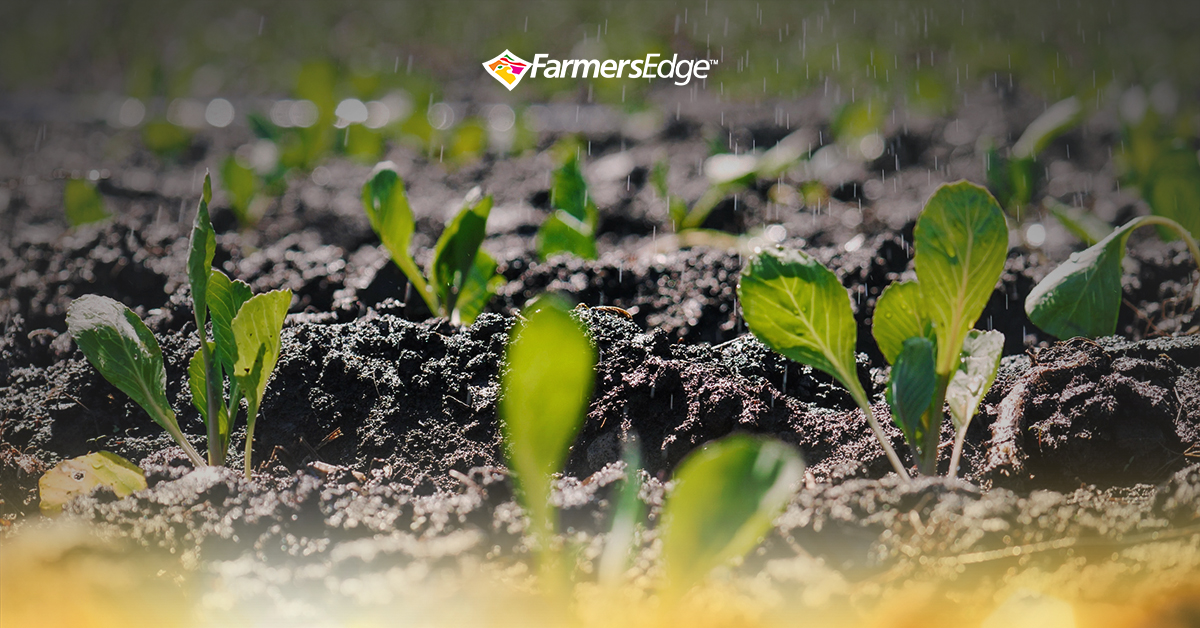By: Thom Weir, Senior Precision Agronomist
The term soil health seems to have become a buzz word. You only had to walk down the aisles at the recent ag tradeshows to observe the promotion of many products promoted as promoting soil health. Often these products are recommended as a “green” or environmentally friendly replacement to commonly used fertilizers and pesticides and promise to improve the soil health. But what is soil health? I would guess that each of the companies selling these products has a different opinion on what soil health is – as do many researchers in the field.
What is soil health?
Often, the term soil health is used interchangeably with soil quality. Years ago, this was possibly the case, but I feel now the two definitions are diverging. Soil quality is often defined as the combined effects of a soil’s chemical properties, its physical properties and its biological function. These three factors working together will determine how it will perform for a given function at a certain place and in a specific environment. The problem is that many people focus only the third factor, the biological portion of the soil, including the living part as well as the organic matter. While these are important components, we must look at all three to get an indication of the health or quality of the soil. This then, the measure of soil functions of the three factors, has become more the definition of soil health today.
Over the years, soil scientists have done an excellent job of identifying the physical and chemical factors of soil. These include the texture of soil, the pH, salinity, and its porosity and bulk density. Where they may have fallen behind is in the identification and measurements of key biological factors and processes that can be used to measure the biological status of soil and how these factors impact soil chemistry, soil physics, and soil function. In fact, it has only been in recent decades that scientists have realized the positive effects of many of these processes and understand their roles in the dynamic living system that is our soil. I believe this is the result of agriculture having, until quite recently, been a plunderer of these biological processes that yielded nutrients to produce a crop.
1980’s and 1990’s
It was only in the eighties when we became aware of erosion (wind and water), salinization, OM loss, and urban encroachment and their impact on our soils. In the nineties, organizations such as the ManDak Zero-Till Association and the Saskatchewan Soil Conservation Association mobilized farmers by making them aware of the agronomic, economic, and social benefits of soil conservation. These organizations and others, along with the development of equipment to seed in “zero-till environments” led to an explosion of acres using “min-till” or “no-till” techniques.
In the 2000s
The decade following the millennium, there was an awakening to the impact of an increased stored warehouse of nutrients in the soil and to the benefits of improved soil health, such as buffering the impact of a drought. During the last decade, researchers began looking at different aspects of what I am calling soil health and advocating to the benefits they were observing. This leads to today where everyone wants to relate their product to soil health.
No-Till
A no-till system can restore soil health over time by improving, for example, soil infiltration, organic matter, water storage, soil structure, etc., which are indicators of soil health. The introduction of perennials on marginal land can increase wildlife habitat and improve the biological and physical components of soil health. The extended crop rotations that include legumes, will increase soil biodiversity and provide organic carbon input. These practices are measures to build healthy soil, which can improve both productivity and the environment. But are there individual measurements that can be taken of soil that indicates whether it is healthy or not?
A trusted soil health source
The Soil Health Institute, a non-profit organization, is trying to tackle this question. They define soil health as “the capacity of a soil to function as a vital, living ecosystem that sustains plants, animals and humans” and have identified criteria that measure the impact soil health. Some of the criteria can be quantified by commonly used tools such as a soil test. Others are not easily measured, or quick, easy, reliable tests have not been developed yet. These tend to revolve around biological aspects of soil health. The Soil Health Institute is a group to keep your eye on. They are evaluating greater than 30 indicators used to measure soil health so we can begin to compare “apples to apples” when looking at the effects of products and practices.
I had the opportunity to talk with Dr. Paul Tracy, who manages the day-to-day activities of the Soil Health Institute’s North American Project to Evaluate Soil Health Measurements. He recently made a presentation at the IHARF Soil and Crop Management Seminar. He chuckled when I mentioned the “tighty whities” method of measuring soil health. While it may work, Paul indicated the Institute will use their research results to support tests that will give more quantitative results. Visit their website for more information on soil health.


